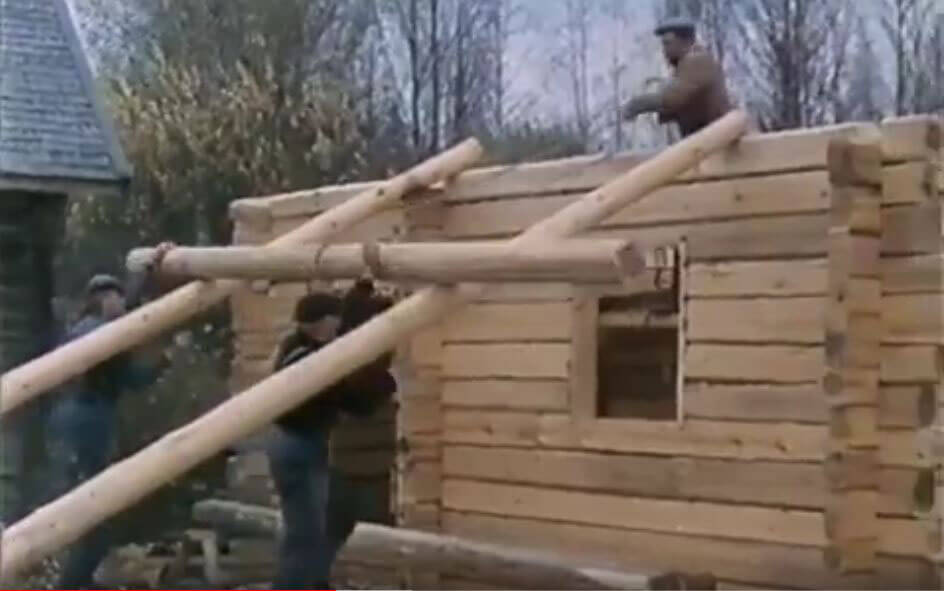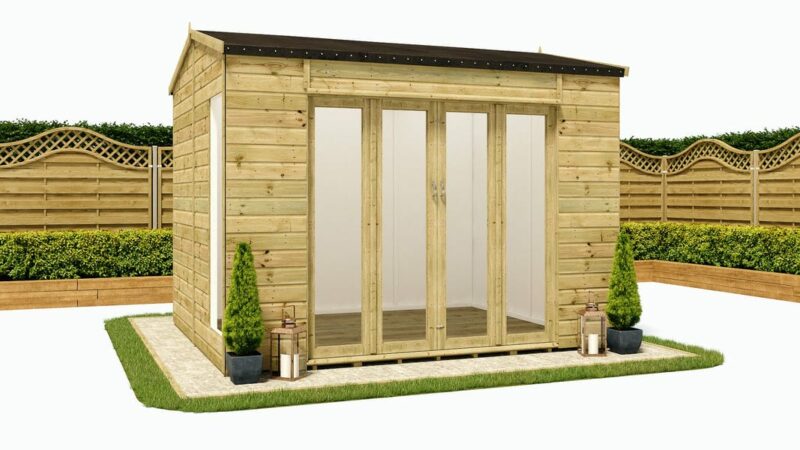
From antiquity, one of mankind’s most basic needs has been shelter. From ancient times to the modern era, humanity has continuously developed sophisticated housing to suit our evolving needs. Though we’ve created many forms of housing over the centuries, the simple log cabin still holds our fascination and is as popular as ever. Log cabins are often associated with camping sites, but more and more people are investing in log cabins for private living.
In the featured video, we observe several gentlemen utilizing hand held tools to construct a log cabin from the ground up. Their attention to detail and expert handling of the wood clearly demonstrates their desire to build a properly insulated and sturdy structure.
Despite this, there are several nuances to constructing a log cabin that isn’t entirely evident in the video. Let’s take a more in-depth look at what it takes to build a log cabin.
Featured Log Cabin Video – Building a Log Cabin by Hand
Log Profiles
When a building log cabin is with the use of timber which can be shaped into several profiles like window frames and wall log. Depending on the profile of the wood, any number of nails, fasteners, or spikes can be used to fix the timber in place as they’re stacked horizontally to form the walls of the structure. Let’s take a look at the main types of log profiles.
1) Square and Rectangular Log
These logs are cut with four square corners and often take on the shape of a rectangle.
2) Round Log
These logs are cut in a circular pattern, with no corners or angles to speak of. Homes built with a round log profile typically use thru-bolts for support.
3) Swedish Cope
These logs are also cut in a circular fashion, though a small crescent-shaped portion of the bottom is cut away so that it’s much easier for the logs to stack on top of each other.
4) D-Log
D-logs are unique in that one side of the log is cut completely flat whereas the other side is cut round. D-log homes are perfect for people who enjoy a round aesthetic on one end (such as the outward facing side), but a flat surface on the other end.
5) Handcrafted
Handcrafted log homes are perfect for those who desire a rustic look. Each log retains its natural shape, and each timber is debarked by hand. Maximum stability is maintained because each log is placed in a precise location within the structure. This is a popular style amongst many vacation sites.
Corner Style
Just as important as the log profile is the corner style of the log cabin.
1) Interlocking corners
The four sides of a log are cut away, creating a recess in which intersecting logs can securely lock into place in all directions.
2) Saddle-Notch Corners
This corner style is often used with the Swedish cope profile. Crescents are cut into each log, allowing logs facing in the opposing direction to lock firmly in place at the corners.
3) Dove Tail
With this corner style, the end of a log is cut into a pattern known as a “fan-shaped wedge.” When the logs are stacked to form the cabin, the wedge on the tail end of the log cabin fit firmly into the perpendicular logs.
4) Butt and Pass
When a log meets a perpendicular log, it stops. The perpendicular log in question characteristically extends past the corner of the log cabin.
5) Corner Post
Logs extend forward until they reach a vertical post that has a number of holes cut along its length in which the logs fasten securely.
Tools
Without tools, it would be impossible to build a log cabin. With that being said, selecting the right tools for the job will ensure you complete the project quickly and efficiently. Let’s take a look at a few must-have tools when you’re constructing a log cabin.
Adze (Or Adz)
The adze is an uncommon tool that’s designed to hew logs. The adze and the axe share a few similarities, but the defining difference between the two is that the cutting blade of the adze is perpendicular with the handle at the base. In terms of appearance, the adze looks more akin to a gardening hoe rather than an axe.
Axe
The axe is the most common instrument associated with traditional log cabins. An axe is a hand tool that is used to fell and harvest logs. In terms of age, the axe is older than the adze. However, they both hail from the stone age.
When building a log cabin, the axe can be used for hundreds of applications. You can use it to prepare lumber, harvest trees, cut notches and so on. Chainsaws are preferably used when precision is in order, but it’s likely the axe will always remain the most popular tool amongst those who build traditional log cabins.
Chainsaw
Though not quite as ancient as the tools mentioned earlier, the chainsaw is a very popular tool that has a variety of uses. Chainsaws can be used to cut, round and notch logs. If you bring a chainsaw along for the ride, you’ll get the job done that much quicker.
Drawknife
Originating in the 1950s, drawknives have a flat chisel-shaped blade that is held together by two wooden handles. The primary function of a drawknife is to peel and debark logs. Though it was designed with this purpose in mind, an adze is still arguably the better tool to perform that particular job.
Using a drawknife is relatively simple. Straddle the log you wish to debark, grip both handles of the drawknife, and pull the blade along the wood towards you. As a result, you’ll begin shaving away the bark.
Log Dog
Unless you’re familiar with the industry, you’re probably not aware of what a log dog is. This is a very specialised iron tool that’s used to hold logs in place while they’re being notched. This tool is highly recommended to ensure that the hewing of your logs are done quickly and efficiently.
Owning a log cabin
If you’re interested in owning a log cabin, there are several options to consider.
Log cabin kits
If you’re interested in building a log cabin, a log cabin kit may be the way to go. Log cabin kits include all of the material you need to construct a fully functional log cabin. Keep in mind there are many variables to consider such as log wall systems, log types, and lumber choice. Each of these factors can affect the price of the log cabin kit and may confuse someone who has never purchased a log cabin.
The primary advantage of a log cabin kit is that the building process has been immensely simplified. Even if you run into issues during construction most log cabin kits have customer service lines that will offer guidance. Furthermore, you only need few tools of tools (i.e. a hammer, a power drill and a ladder) to get the job done.
Hire an architect to design your log cabin
If you’re the type who wants an elaborate log cabin, but you have no idea how to make the ideas in your head come to life, you’ll want to hire an architect. There are plenty of architects out there, but not all of them specialise or even have the experience needed to construct a log cabin. Do your homework and find an architect who has a great reputation in the industry. Ideally, the architect should also belong to a Log Building Association.
Hire a builder to build a log cabin for you
Who said you had to build the log cabin yourself? Hire an experienced contractor to do it for you. This will likely be the most expensive option for obvious reasons, but if you have the cash the investment will be well worth the expense.
The benefits of hiring a contractor are numerous. Perhaps you don’t have the skill set to build a log cabin yourself or perhaps you don’t trust your ability to safely take on a project of a such a large scope. Whatever the case, that burden will be lifted by hiring a contractor.
Another benefit of hiring a contractor is that you can rely upon years of accumulated experience. If something were to go wrong, who would you want to fix the issue? You, or a contractor who knows exactly what they’re doing?
If you’re interested in building or owning a log cabin, know there are many options available to you. If you’re on the fence about making a purchase, you should try one of the many log cabin vacation sites in the U.K. That way you can try out log cabin living before making a purchase decision.








